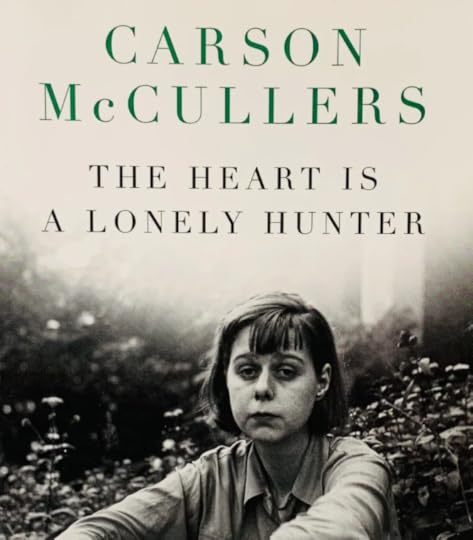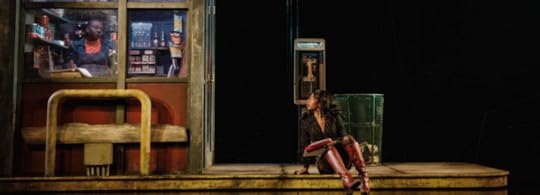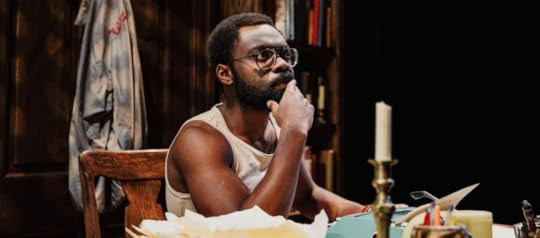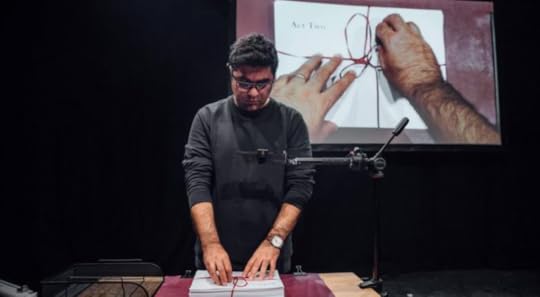Paul E. Fallon's Blog, page 5
November 27, 2024
The Thanksgiving Play. It’s Not What You Think. It’s Way Better.
The Thanksgiving Play
November 21 – December 15, 2024

Forgive me for being wary when I read the flyer for The Thanksgiving Play, written by Larissa Fasthorse and directed by Tara Moses, Seminole Nation of Oklahoma/Mvskoke. I pictured an audience of affluent white folks being brow-beaten by the sins of our forefathers.
The first ten minutes reinforced my fears. Uber correct elementary school drama teacher Logan (Jasmine Rochelle Goodspeed) and her wannabe equally woke boyfriend Jaxton (Johnny Gordon) trade politically correct drivel in a perfectly rendered public school classroom as they prepare to create a Thanksgiving play for their students. Among Logan’s listicle of development grants is one to celebrate Native American Month. She’s actually hired a Native American to star in the show! Geeky history teacher/theater nut Caden joins the process. Just when the overwrought language of inclusion wears so thin as to become humorous, Alicia (Marisa Diamond) arrives—fabulously late. The featured actress is no one’s conception of a Native American. Turns out she’s just a garden variety Disney Princess who sports seven different head shot identities to increase her chances of getting a gig. You want Jasmine? Mulan? Pocahontas? Alicia will deliver.

Between classroom scenes, the actors realign to deliver direct snippets from actual teacher training manuals, You Tube videos, and media reports that illuminate how corrosive depiction of Native Americans continue in our society to this day.

The four white characters, charged with creating a culturally appropriate Thanksgiving play, tangle and twist and contort themselves so far from original purpose they wind up realizing, “Whatever, it’s theatre. We don’t need actual Native Americans to tell a Native American story.” The play moves from the intractable problems of playing redface to a joyful acceptance of whiteface with so much hilarity, by the time The Thanksgiving Play descends into farce, and gallons of white paint cover everyone, playwright Larissa Fasthorse’s point is well made: all this circular angst is not getting us anywhere near the roots of the structural inequities of our world.
The play ends on an ambiguous note that I will not spoiler alert. Except to say, that while it feels vacuous in the stage moment, it resonates true long afterward.
 Cast of The Thanksgiving Play. Photo by Smugmug.
Cast of The Thanksgiving Play. Photo by Smugmug.My habit is to read the program, and other media, after I’ve seen a play. I like the fewest possible preconceptions. Director Moses noted that the script reads, “BIPOC that can pass as white should be considered.” I find that a telling note in an era when progressive culture has straight-jacketed actors into identity silos where, for sure, white actors cannot play anything else but. The program goes on to proclaim that all four actors are Native American. After seeing so many white guys play Injuns for so much of my life, this seems fine, even refreshing. But I wondered whether the program writers observed the same play I just did—where the entire idea of slicing humans into so many discrete, disconnected identities yields us exactly: nothing.
November 25, 2024
Mindplay
Mindplay
November 13 to December 1, 2024
Calderwood Pavilion, Boston
December 15, 2024 to April 20, 2025
Greenwich House Theater, New York City
 Program Cover Photo. Credit Unknown.
Program Cover Photo. Credit Unknown.A few minutes into Mindplay, mentalist Vinny DePonto asks the question hanging from the curtain beyond him. “What’s on your mind?” He answers his own question in Big Brother fashion. “When someone knows this, they can control you.”
Then, through ninety minutes and a dozen or so audience members (selected at random from a fish bowl of the envelopes each audience member completed and sealed before entering the theatre), Vinny proceeds to control our minds. Or, at least, peer into them with chilling accuracy.
Mindplay has a vintage, vaudevillian sensibility—grainy black and white slide projections, cassette recordings, tales of a billiard-loving grandmother and magic-teaching grandfather—coupled with 21st century neurology. Vinny accompanies his mental machinations with a fair smattering of how our brains work. And how they don’t. And how they work in ways we don’t understand.
His sleights of mind are amazing. The audience gasps again and again when volunteers confirm that he’s correctly mined their minds. Vinny convinces one volunteer that her empty right arm is supporting a bucket of water, her left a balloon; and her arms lower and rise accordingly. He slows his pulse to zero; we see him grow chill. Then he slides behind a stage curtain and reappears at the rear of the theater quicker than Star Trek could beam him up. The most impressive trick, to me, involved two volunteers sitting opposite lengths of a table. Vinny cajoled thoughts from one, and shifted them, somehow, to the other. Returning to the original, he then lightly touched her, while the other volunteer felt the pinch.
Merely describing these feats in words dissipates the wonder of the experience. My mind was at play the entire time trying to understand the what and where and how of his magic.
 Vinny DePonto among the file drawers of our brain. Photo by Jeff Lorch.
Vinny DePonto among the file drawers of our brain. Photo by Jeff Lorch.When the curtain parts to display an impressive set of gunmetal grey steel file drawers, representing how we store information, Mindplay feels like an actual play. Vinny roves among the data depositories, extracting all manner of cranial curiosities. Drawers ring and glow and shake. He climbs among them like a jungle gym. All the while extolling neurological delights.
The final segment, back before the curtain, is—sadly—the most unsettling. Vinny extracts some difficult memories from a lovely older woman, who winds up crying onstage. Whether this is typical of all performances, or was singular to ours, I’ll never know. But it felt unnecessary, in the least; exploitative, at best.
Nevertheless, the after-show vibe in the theater lobby was unlike any I’ve witnessed. People clustered around the various volunteers, inquiring whether they were plants (they were not) and whether all that they said and did onstage was true. I met the woman who reacted to being touched, even when Vinny was touching someone else. Did she actually feel those pinches? Yes, she confirmed, she did.
 Vinny DePonto and volunteers in Mindplay. Photo by Chris Ruggiero.
Vinny DePonto and volunteers in Mindplay. Photo by Chris Ruggiero.Oh, and did I mention ice cream? There’s a through line about ice cream from first scene to last. One of the volunteers admits to craving strawberry. And there, in the lobby, for all to enjoy at the end of the show, were hundreds of little dishes of…strawberry ice cream from J.P Licks. By this time my mind was blown so wide open, I simply swallowed down the sweet, delicious stuff.
Mindplay is not much longer in Boston. But the show is moving to an extended run in New York. If you can’t catch it here, perhaps Vinny DePonto can teleport you there.
November 20, 2024
The Heart is a Lonely Hunter

This summer, I reread The Heart is Lonely Hunter. Carson McCullers’ masterpiece, published in 1940 when the author was 23-years-old, is a perennial feature on many “Best Of’ book lists. (Ranked #17 in The Modern Library List of 100 Best Novels, among others). Thirty years after my first encounter, the novel is as piercing and vibrant as I remembered. But a singular attribute struck me in a fresh light.
Today, I doubt that the author of The Heart is a Lonely Hunter could find a publisher.
The central character of The Heart is a Lonely Hunter is a middle-aged deaf man. As the novel opens, fastidious Mr. Singer lives with another mute, a messy, obese Greek named Antonopoulos. In short order Antonopoulos gets in trouble and his cousin commits him to an asylum, a feasible plot turn in 1930’s America. In time, an odd assortment of misfits attaches themselves to Mr. Singer. Biff Brannon, a man of wide and weird sexual tendencies, owns The New York dinner, which is open pretty much all the time. Jake Blount is an alcoholic socialist and carnival mechanic. Dr. Benedict Copeland is a Negro physician drowning in the inequities of his place and time. Mick Kelly is a tomboy with dreams well beyond her family’s boarding house in this Georgia mill town. There’s also a bevy of supporting characters, Black and white, intelligent and illiterate, each believable and sympathetic.
The novel has a plot, insomuch as time passes and things happen among the various characters. But what makes it an irresistible read are the characters themselves, so unique, so real, so richly rendered.
Which is the reason, of course, that The Heart is a Lonely Hunter would have a tough time finding a publisher in 2024. A 23-year-old white woman who escapes the Deep South to find literary acclaim might well write about a restless tomboy. But how could she possibly (regardless how sensitive) pretend to write about a deaf person, a tortured night-owl, a socialist, and a frustrated Negro? Aren’t these each distinct people, with distinct identities? How dare Ms. McCullers presume to give them voice?
Such are the blinders of our identity-driven age. So fixed on how we are different that we dismiss our commonalities. The genius of The Heart is a Lonely Hunter is not the peculiarity of each character. Rather, it is the universal humanity that motivates them all. Anyone who reads this amazing book will see themselves in every character, and in some small way bridge the artificial divides we have created in the name of…I’m really not sure.
The heart is a lonely hunter, regardless the color of our skin or the digits on our bank statement. Human connection is always a challenge. Yet in our era of stupendous communication capability, we have managed to make it all the more difficult. Thank goodness to Carson McCullers’ beautiful recitation which acknowledges that, yes, we are all alone. But at least we’re all alone together.
November 14, 2024
A Universal Tale of Folks Unlike Me
Sojourners
October 31 – December 1, 2024
 Abigail C. Onwunali and Asha Basha Duniani in Sojourners. Photo by Marc J. Franklin
Abigail C. Onwunali and Asha Basha Duniani in Sojourners. Photo by Marc J. FranklinThe Huntington is spearheading the Ufot Family Cycle, a series of nine plays by playwright MFoniso Udofia that chronicle the experience of a Nigerian-American family in this country. The plays will be presented over the next two years in and around Boston. The scope of this project is impressive, yet it seemed particularly poignant that opening night of the first play in the series, Sojourners, took place on Wednesday November 6, the day after our country elected Donald Trump to another presidential term. The characters in Ms. Udofia’s plays do not represent President Trump’s vision of America. And yet here they are, American as you and I, though perhaps without an appreciation of apple pie.
Elections and politics aside, I was looking forward to seeing Sojourners because I had attended the opening rehearsal of this production, and was keen to see how it had evolved from a table read to a full production.
Sojourners is a chamber play, sometimes called, less kindly, a kitchen sink drama. There are only four characters; never do they all appear on stage. The setting is domestic, even proletariat. The costumes are vintage; loud nylon shirts and bell bottoms circa 1978. So I wondered how The Huntington would bring a play long on themes but short on visual splendor to their main stage.
The Huntington is famous for its elaborate sets, and they triumph in this production by creating a dingy apartment, a garish gas station, a claustrophobic dorm room, and a hospital ward, each meager yet imbued with a presence worthy of main stage. The trick is three screens, full stage height and width, entwined with curved metal that open and close to reveal only that stage portion where action occurs. The screens are elegant, yet also reminiscent of marsh or grasslands. And of course, they are cages. The action is tightly circumscribed, as are the lives of the sojourners.
 Joshua Olumide in Sojourners. Photo by Marc J. Franklin
Joshua Olumide in Sojourners. Photo by Marc J. FranklinThe plot of Sojourners is tragic. The actors are wonderful, though at times the desire to faithfully relay English with a Nigerian accent left me, and many around me, confused, even lost. Nevertheless,. Ms. Udofia is as much poet as playwright, and her language rolled out and over the audience, a tidal surge of human yearning.
Because this is the first of nine plays, some plot points are left dangling; taste teasers for future productions. And the decision that the main character, Abasiama, makes in the final moments of the play is so shocking I can hardly wait to see what will happen next (in The Grove, February 2025).
The true resonance of Sojourners is a universal story of striving and failing and striving again. None of the characters bear the least resemblance to my own life, and yet I identified with each of them, was honored to spend time with them, and want to spend more time with them. That’s what universal stories are—they tap into what we share rather than highlight how we are different.
Sojourners is the perfect palate cleanser to this post-election moment. Go see it, and be nourished.
November 6, 2024
Make Our Garden Grow
 All photos Courtesy YouTubeTV: BBC Proms
All photos Courtesy YouTubeTV: BBC PromsYesterday, Election Day 2024, I was a poll worker at my local precinct, as I am every election day. We are a great crew at Cambridge Ward Three Precinct Nine. After taking our dawn oath to uphold the Constitution of the United States, we spend the day making the Constitution’s promise real: treating each voter with respect, providing any assistance they may need to cast their vote, counting, checking rechecking that every vote is properly cast: only once. An orderly exercise in democracy. The work’s not difficult, but it’s exhilarating. To greet my neighbors, to witness the incredible array of people who inhabit my tiny corner of a city, to be a small cog in the process we call democracy.
This election, we had a new member of our crew. When Namran and I chatted during a break I asked why he decided to do this work. “I am from Iran, where a couple of clerics hand down the names of four pre-selected people, and they call it an election. What happens in this country is beyond our imagination. I wanted to be part of it.”
I returned home, exhausted, and went to bed. The actual results of the election I’d just participated in could wait.
I woke refreshed, with a song in my head. “Make Our Garden Grow,” from Leonard Bernstein’s Candide. That tune told me, immediately, that whatever the election results, I will be fine.
I’ll keep on doing what I do; lending my voice and my hand to people and causes I care about.
I opened the internet to discover a Trump sweep: a majority vote, an Electoral College victory, with Congress in his pocket.
The gut-wrenching reality of democracy is: we get the government we deserve. Unlike the citizens of Iran, we have freely chosen Donald Trump to be our president. If the ramifications of such a choice turn dire, we have no one to blame.
The personal ramifications of another Trump presidency vary for each of us,. But they are immediate, and they are real. For me, the two Haitians I love most, and applied to sponsor under Biden’s parole program, will now languish in Haiti for who knows how many more years. But I will continue to tutor Haiti immigrants here, helping them navigate our confusing country, marveling at their energy and initiative, so completely opposite the caricatures Trump denigrates.
Human history is written in blood. We are tribal, fearful violent, possessive. Although I agree with Martin Luther King Jr.’s assessment that, “the moral arc of the universes is long, and it bends towards justice,” I also know that arc is riddled with kinks, and often suffers reversals. I believe that the election of Donald Trump is one of those kinks. I will accept it as the will of the American people, but I will not let it bend me from my pursuit of a peaceful, equitable society. To look for the best—rather than the worst— in each of us. To address anger with kindness. To counter fear with hope. To meet hate with love.
Anthems are stirring songs, too often used to excite people with puffed up patriarchy and patriotism. I love “Make Our Garden Grow” because it is an anthem of nourishment, of community. When it filled my head this morning I knew it would sustain me through whatever reckoning our country has inflicted upon itself.
Perhaps it will offer solace and inspiration to others baffled by choice we have made.

You’ve been a fool
And so have I,
But come and be my wife.
And let us try,
Before we die,
To make some sense of life.
We’re neither pure, nor wise, nor good
We’ll do the best we know.
We’ll build our house and chop our wood
And make our garden grow…
And make our garden grow.
I thought the world
Was sugar cake
For so our master said.
But, now I’ll teach
My hands to bake
Our loaf of daily bread.
We’re neither pure, nor wise, nor good
We’ll do the best we know.
We’ll build our house and chop our wood
And make our garden grow…
And make our garden grow.
What worlds they please
Those Edens can’t be found.
The sweetest flowers,
The fairest trees
Are grown in solid ground.
We’re neither pure, nor wise, nor good
We’ll do the best we know.
We’ll build our house and chop our wood
And make our garden grow.
And make our garden grow!
October 30, 2024
I Want to Do Damage!
 1976 Pacer – What happy car!
1976 Pacer – What happy car!I am a pacifist. Totally, impractically, naively against all forms of violence. I have never hit another human being. And no one has ever hit me. (I am exempting my belt-wielding father who hit all kinds of things because, well, that kind of thing was accepted in the early ‘60’s). True, I possess a temper that can flare hot and impulsive as a gusher, but it never explodes through a gripped fist, a baseball bat, or (god forbid) a trigger.
For thirty-two years I’ve lived in a neighborhood, Strawberry Hill, whose 1, 2, and 3-family houses used to be inhabited by working families, predominately Italian, on the furthest edge of Cambridge. As far as you could get from hip Harvard Square within the same zip code. Back in 2018 I marked Strawberry Hill’s evolution from an enclave of electricians, mail carriers, and fire fighters, to one of consultants and professionals, and though I acknowledge to being a pioneer in that transition, at least I’ve never succumbed to my environs’ most blatant sign of limousine liberalism: I don’t own a Tesla.
Today, any lingering hipness in Harvard Square is corporate illusion, while my dual-Tesla-owning neighbors have fixed a sticker to their bumper: “I Bought this Tesla Before Elon Went Crazy.” But the more worrisome change is personal. I am possessed by a wanton desire to do violence.
The Cybertruck has invaded. And I want to beat on it.

It is an established fact that our society has grown less civil; less tolerant; more enraged. And our vehicles match this descent. The bodies have grown bigger, the windows smaller, the grills angry. Remember the 1970’s Pacer? So much glass, it looked like The Jetson’s space cars. Compare them to a 2021 Lexus, with its pinched grill, mammoth sides, and narrows windows. A tank for soccer moms.
Lexus’ are definitely anti-social. But they’re meek compared to the turbo-tanked Tesla Cybertruck. How can these things even be allowed on our streets?
Two of the beasts have arrived in my neighborhood. I see them often, their cold grey steel and slot lights and sharp angles taking up too much space on our narrow pavement, menacing in their domination threats. Every time I see them, my blood pressure surges, and I yearn for a bat. I’ve never been called upon to test my testosterone levels, but I’d gladly have it measured while beating the crap out of those unwelcome machines.
The good news is that I don’t carry a bat. So the Cybertruck owners in my neighborhood (those mother$&*#@ers) are safe from me doing any damage beyond mere imagination.
The even better news is that, apparently, Cybertrucks are lousy vehicles. They’ve all been recalled due to accelerator problems (all bullies have accelerator problems). Some have electrical problems that result in random shut downs. A few have even gotten stuck and have been towed out of mud by, gulp, Ford pickups.
Like so many swaggering bullies of our era, Tesla Cybertrucks are wimps hiding a false coat of armor. Apparently, their tough looking steel finish is easy to scratch and stain; difficult to clean. They can actually be damaged by a conventional car wash! I’ve been thinking, maybe, I might toss an egg at one and give its over-inflated owner a buffing challenge.
But in truth, I’m too much of a pacifist for even that. Besides, I’m take solace in the hope that the Cybertruck will wither to insignificance under the weight of its own delusions of importance.
 SKA Architects actually put their logo on their behemoth! An embarrassment to the profession.
SKA Architects actually put their logo on their behemoth! An embarrassment to the profession.
October 23, 2024
Pru Payne
Pru Payne
Speakeasy Stage
By Steven Druckman
Directed by Paul Daigneault
October 18 – November 16, 2024
 Gordon Clapp and Karen MacDonald in Pru Payne. Photo credit: Niles Scott Studio
Gordon Clapp and Karen MacDonald in Pru Payne. Photo credit: Niles Scott StudioThe twenty-first century has ushered in a new form of drama: the dementia story. Hollywood apparently loves to see nature actors unravel, bestowing Oscars on Julianne Moore for Still Alice (2014) and Anthony Hopkins for The Father (2020). My personal favorite Alzheimer’s film is Sarah Polley’s Away from Her (2006). Based on an Alice Munro short story, it stars Julie Christie as Fiona, a woman who withers before our eyes. When Fiona deteriorates to the point that an institution is required, she sparks a sudden, illogical, romance with another resident, much to the despair of her devoted husband.
A parallel relationship fuels the drama in Pru Payne, a five-actor play in which an intellectual, opinionated creative critic crashes through cerebral crevices to collapse in a confining clinic. (The play features exhaustive alliteration, of which I will spare you any more). While under ‘observation’ Pru falls for fellow patient, Gus, the custodian/bus driver of a local prep school. They each have one son, who were brief lovers years ago at that prep school. The subplot of these boys all-grown-up reuniting in the gay-sex-wary year of 1998 is as completely predictable as the love story between Pru and Gus is unexpected. And therein lies the challenge—and opportunity— for playwright and audience member.
The relationship between Pru and Gus is unbelievable as every level, except perhaps the level of dementia. For though there’s much we don’t know about the condition, we do know that as it clouds certain dominant aspects of a person’s character, it often unveils unexpected attributes and affinities. In their right minds, Pru and Gus would have barely passed the time of day. She’s an aloof, critical, never-been-in-a-relationship woman (her son, who’s Black, having been born by strategic insemination as a weapon against writer’s block). He’s a likable stump. Their passion defies credibility, which, in the context of dementia, gives it credibility.
Once we dismiss all of our misgivings about Pru and Gus as a couple, the strange dichotomies that are dementia come to the fore.
Pru Payne isn’t a great play, but it lingers in your mind because of the courage playwright Steven Druckman took in pairing these unlikely lovers. Speakeasy’s austere production with its bare stage, clinical curtains, and five cafeteria-style chairs is too cold. If the dialogue didn’t remind us, often, it was 1988, we’d have no way of knowing. I was there; 1988 was mauve. Still, the austerity focuses our attention to the production’s strongest asset: the indomitable Karen MacDonald.
 Karen MacDonald in Pru Payne. Photo Credit: Niles Scott Studio
Karen MacDonald in Pru Payne. Photo Credit: Niles Scott StudioKaren MacDonald has been a Grande Dame of Boston theater for years. One of the final members of the A.R.T. back when it was true to its initials—a reparatory company—Ms. MacDonald is a regular in memorable roles with The Huntington, Lyric, Speakeasy, and other local theater companies. Karen MacDonald is always good. In Pru Payne, she is amazing. She inhabits this brilliant, difficult, unfulfilled woman with gravitas and humor. From her strident opening monologue to her final dithering in a wheelchair, Ms. MacDonald illuminates an eighty-minute spiral from the apex of personal capability to the internal confusion of a hell none of us ever wants to enter.
Karen MacDonald is the real reason to see this Pru Payne. Or as she caustically rephrases her own name in a moment of demented clarity: Pru-Dense-Pain.
October 15, 2024
Once Upon a Time…
Nassim
October 4 – October 27, 2024
 The set of Nassim on October 9, 2024. Photo by Mike Ritter.
The set of Nassim on October 9, 2024. Photo by Mike Ritter.I try not to know too much about a movie or a play before I see it; I like to form my own impressions. But often it’s difficult to duck the media onslaught in advance of a premiere
In the case of Nassim, I knew it was more performance piece than conventional play. I knew that playwright Nassim Soleimanpour offers a one-person show that features a different special guest at each performance.
The evening before the Press Opening I had dinner with a theater-friend who’d seen Nassim in previews. No spoiler alerts, but she wondered who’d be special guest for the press. “Maybe Michael Maso?” (recently retired Managing Director of The Huntington and Boston theater hero).
“I don’t think so,” I said. “I’d go with Jared Bowen.” (WGBH Arts Reporter and all-around-town handsome, witty man.)
“Oh, that would be great,” my companion replied. “Give the press one of their own up on the stage.”
The following evening, as I entered the Wimberley Theater at The Calderwood, I smiled in satisfaction. A table sitting on the mostly black, mostly empty stage contained a cardboard box with the name: Jared Bowen.
 Jared Bowen at Nassim. Photo by Mike Ritter
Jared Bowen at Nassim. Photo by Mike RitterThe premise behind Nassim is simple as it is effective. When the stage manager concludes the usual pre-show housekeeping announcements, he introduces the evening’s special guest. Jared comes on stage and gets his instructions: open the box, follow the directions, and perform the script. No prior exposure; no rehearsal. Oh, and by the way, the script is 456 pages long.
Stage Manager leaves. Jared opens box. Finds a single piece of paper that directs him to read whatever comes on the screen. A large screen illuminates, and Jared starts to read. It’s awkward. It’s funny. Jared figures out he’s only supposed to say normal case words out loud (italics are stage directions). Whoever is manipulating the illuminated pages has a sense of humor.
After a while, the script requires Jared to try to pronounce words in Farsi, which proves farcical. But the man behind the screen, much as the man behind the curtain in Oz, proves to be gentler, kinder than one might imagine. A simple tale emerges, about a boy who lives in a house with a balcony, whose mother reads him stories of a little bear. Eventually, Jared is invited to meet the man manipulating the screen. He leaves the stage and appears onscreen, with a greenscreen background of Iran. Soon thereafter, both Jared and Nassim Saleimanpour himself come to front stage. It’s difficult to explain why this is all so funny, yet it is. The audience is in hysterics. Except when we swoon in empathy.
Farsi and English are languages on far ends of the comprehension spectrum. Yet the story, simple as it is, is a universal one. And therein lies the genius of the piece. A playwright from a country that we are more or less conditioned to hate, a place where the populace is indoctrinated to hate us, threads a lovely needle of commonality.
Nassim has been produced all over the world. But not in Iran. None of Soleimanpour’s plays have ever played there. Yet, by the end of Nassim, Jared Bowen is telling Nassim’s mother a fairy tale, over the phone, in Farsi, because what Nassim truly wants, is for his mother to hear his play in her native tongue.
It’s a bit of a puzzle, why this play is banned in Iran. It’s not political in the least. But scratch the surface, or tickle the little bear, and you uncover the most subversive of all messages. That communicating with the enemy is good. That you might actually become friends. In a world where the powerful maintain control by mongering against ‘the other,’ where would the powerful be if we all just decided to be friends?
 Nassim Soleimanpour at Nassim. Photo by David Monteith-Hodge
Nassim Soleimanpour at Nassim. Photo by David Monteith-HodgeI’m particularly attuned to how theater can (must) be different from whatever’s available on a screen in order to be relevant in our world. Screens are ubiquitous; content is easy, cheap, and plentiful. So why go to theater? When I see a set whose primary element is a large screen a large screen, I shudder. I came to see live! Yet I know that my eyes will be drawn to whatever is projected over the physical action on stage.
Nassim tweaked my worries. A lot goes on the screen, but everything on the screen is live. The weakest portion of the show was when Jared went backstage and all we had was screen. When he returned, and Nassim joined, and the screen manipulation became visible, the fusion between theater and: You Tube; Instagram; you name it; was closer than I’ve witnessed.
Days after the performance, I’m hard pressed to deliver an elevator speech about the plot of Nassim. But I keep thinking about it. Which is cool.
October 9, 2024
Bringing a Play to the Big Stage…and small stages…and free stages
October 1st is Nigerian Independence Day. This year, it also marked the kick-off of an impressive theatrical endeavor across Boston.

The Ufot Family Cycle is a series of nine plays written by Mfoniso Udofia, that follow three generations of a Nigerian-American family. Ms. Udofia, an American of Nigerian descent, grew up in Southbridge, MA and attended Wellesley College before heading west to American Conservatory Theater (A.C.T.) and a theatrical career that has taken her all over the country.
Over the next two years, thirty-three Boston-area organizations will collaboratively produce all nine of Ms. Udofia’s Ufot Family Cycle plays at a variety of local theaters, as well as in pop-up locations throughout the city. The scope of this undertaking was on full display on October 1, when The Huntington invited a crowd of philanthropic and theatrical folks to attend the first rehearsal of the first play of the cycle: Sojourners, which will run at The Huntington’s main theater from October 31-December 1, 2024.
Over a hundred people convened at the Michael Maso Studio for the noteworthy kickoff. The opening portion of the event included an overview of the entire cycle by Huntington Director of New Work, Charles Haugland, followed by introductions by playwright Udofia, and director Dawn M. Simmons, as well as presentations from the set, sound, and costume designers. I’m usually allergic to the workshop tradition of going around the room and introducing ourselves, especially with such a big crowd, but the breadth of representation at this event was so remarkable, I was fascinated to learn everyone’s involvement in this massive undertaking.
Afterward, playwright, director, and cast; dramaturg, dialogue coach, and assistants sat around a large table, while the rest of us circled our chairs and listened to the first read-through. In keeping with Loretta Greco’s (Artistic Director, The Huntington) winking comments to the press that no form of review is allowed, I will only say that the language of this play is beautiful, and I am looking forward to see it fully staged.
Walking home from the event I was struck by the complexity of putting together a work of theater: so many more people than we ever see on stage pooling their talents in light and prop, dress and sound to reinforce the words, movement, and emotions expressed on stage. Then, that fascination was eclipsed by the sheer wonder of undertaking this entire nine-play cycle. It’s a privilege, and a phenomenon, to live in a time and place where, within our culture of divisiveness and complaint, we can come together to create such a huge piece of art that celebrates our freshest Americans.
 The 33 organizations bringing the Ufot Family Cycle to life. Image Courtesy The Huntington.
The 33 organizations bringing the Ufot Family Cycle to life. Image Courtesy The Huntington.Where to See Sojourners:
October 31- December 1, 2024: The Huntington Theater Main Stage
Free Pop-up Performances around Greater Boston:
Wednesday November 13 at 7 p.m.: Riverside Theatre Works, Hyde Park
Tuesday November 19 at 7 p.m.: College of the Holy Cross, Worcester
Friday November 22 at 7 p.m: Zumix, East Boston
Tuesday November 26 at 6 p.m.: Roxbury Community College
October 2, 2024
Dirty Rotten Scoundrels
Dirty Rotten Scoundrels
Arrow Street Arts Center
Cambridge, MA
September 28 – October 20 2024
 Matthew Zahnzinger, Phil Tayler, and Sophie Shaw in Moonbox Production’s Dirty Rotten Scoundrels.
Matthew Zahnzinger, Phil Tayler, and Sophie Shaw in Moonbox Production’s Dirty Rotten Scoundrels.Photo by Molly Shoemaker
Moonbox Productions‚ once again, delivers a top-notch production of a Broadway musical. This season’s opening score is Dirty Rotten Scoundrels, David Yazbek and Jeffrey Lane’s 2004 musical based on the 1988 movie. The set is sleek, the orchestra lush, the dancing phenomenal. Matthew Zahnzinger is suave as Lawrence Jameson. Shonna McEachern’s voice resonates all the way back to soap-queen Christine Colgate’s native Cincinnati, and Tader Shipley spins a star turn as an Okie Oil-heiress on the hunt. But the real reason to go is: Phil Tayler. This man can amp up any manic stage role to eleven. He’s so frenetic and hilarious you wonder how he can possibly sustain the energy through Act Two. But his zaniness spirals right through curtain calls.
The plot of Dirty Rotten Scoundrels is thin, really just a through line to link hysterical send-ups. A pair of con men—one sophisticated, one boorish—elbow each other for a French Riviera turf and then make a bet to see who can swindle an American heiress. The show has an old-school musical feel: the eight-person song and dance team twirl onto the stage on the flimsiest pretense. But who cares because they are so very fun to watch! Dance Captain Jake Siffert is a stand out in every number. I wish they could have found a way to solo showcase his amazing ability.
I attended the Press Opening, but due to some snafus in days before, Moonbox announced it would be a ‘soft opening:’ i.e. there might be few flubs. In fact there were. Some rocky transitions, a couple of dead moments, a few too many times when the dancers had to reference each other to make sure they were on step. All of which I am confident will get smoothed by the time you read this. On the flip side, the rare times when Matthew Zahnzinger or Phil Tayler missed a line during this dress-dress rehearsal they recouped it, in character, with such wit, they simply added to the silliness.
There are two significant elements of the show that disappoint: both due to problems with the play rather than Moonbox’s production.
First, the second act is too long. There had to be three, four, maybe even five places where I thought the show would end, but no, it kept on going, without offering any fresh satisfaction. Too much coming and going in an overly complex resolution of the plot (which we hardly care about anyway). I wished for one more big number so we could all exit humming and tapping.
Second, the characters are unlikable. No matter how wonderful Zahnzinger and Tayler are, they play—as advertised—dirty rotten scoundrels. For me, this is a problem in a musical. When we, the audience, suspend belief to the level that we accept people singing and dancing as an appropriate response to any joy or tragedy, we do it to embrace themes and emotions that rise to a musical pitch. Therefore, it’s important to like the main characters, even better to embrace their cause. Sorry, David Yazbek. The two low-life’s who headline this show are simply not worthy.
So, put aside any noble ideas and go see Dirty Rotten Scoundrels anyway. The surface fun that Moonbox delivers. Every bit as good as Broadway. As close as Harvard Square.
 Shonna McEchern and cast of Moonbox Productions’ Dirty Rotten Scoundrels. Photo by Molly Shoemaker.
Shonna McEchern and cast of Moonbox Productions’ Dirty Rotten Scoundrels. Photo by Molly Shoemaker.



